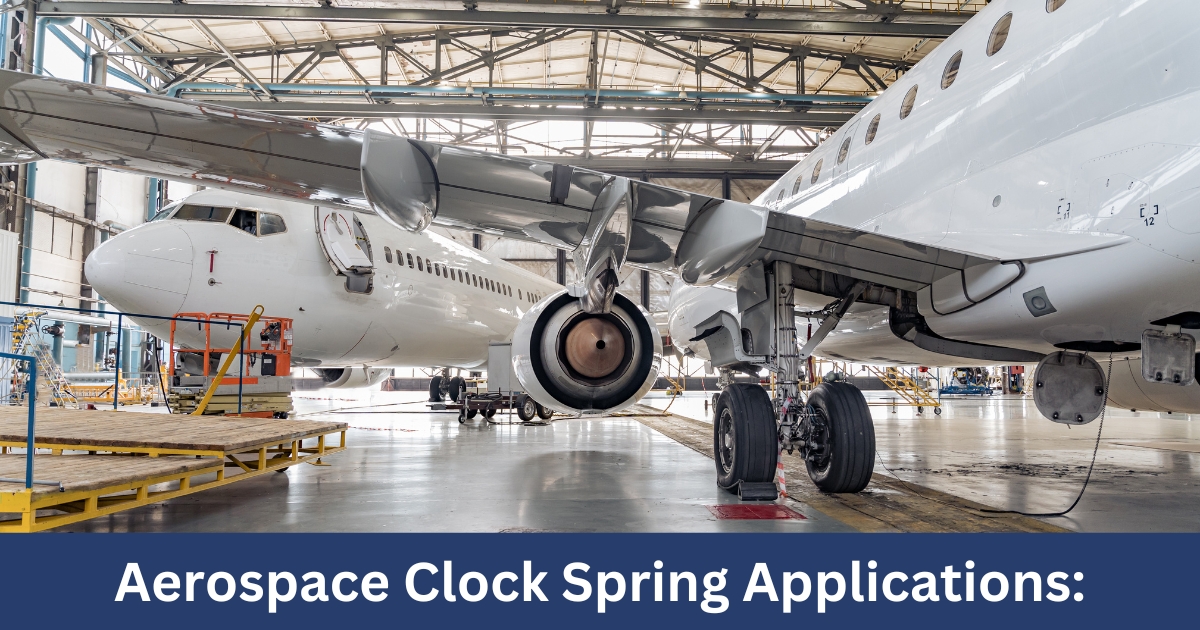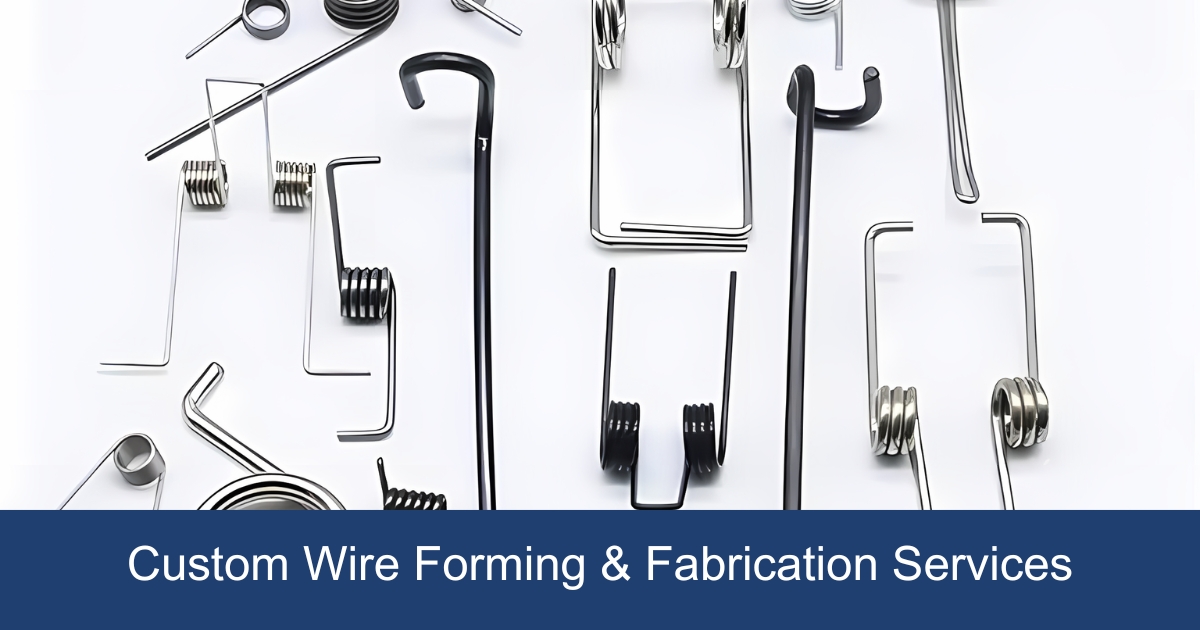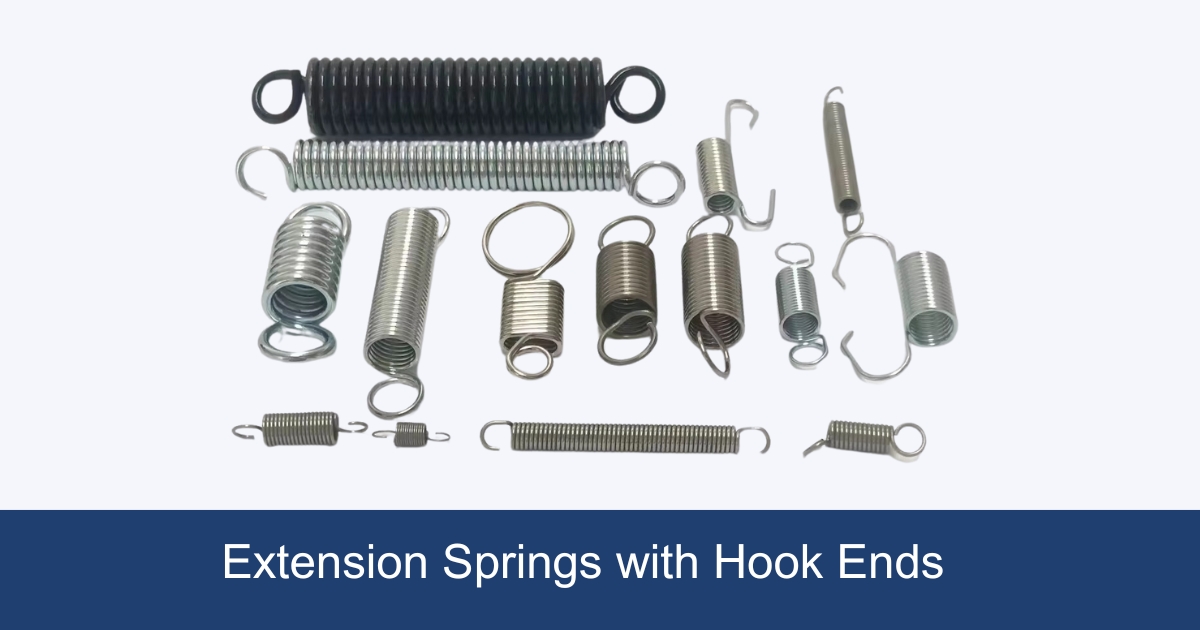Torsion springs, fundamental mechanical devices, play a pivotal role by storing and releasing angular energy or holding mechanisms in place. Their versatility spans from tiny electronic gadgets to substantial machinery components, demonstrating the broad spectrum of torsion spring applications.
This torsion spring design guide will navigate through the intricacies of torsion spring mechanisms, exploring various torsion spring types, including the helical torsion spring, and delving into the engineering fundamentals that govern their construction. From selecting the right materials to calculating the torsion spring constant for optimal performance.
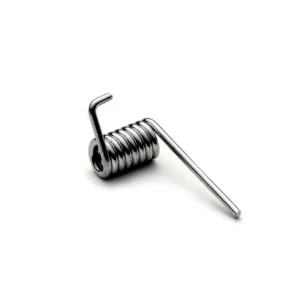
Key Parameters in Torsion Spring Design
In the realm of torsion spring design, several key parameters play a critical role in ensuring optimal performance and longevity. Understanding these factors is essential for engineers and designers to create springs that meet specific application requirements.
- Spring Index and Proportions: The spring index, a critical dimension defining the ratio between the coil diameter and wire diameter, should ideally range between 4 and 14. This range ensures the spring’s structural integrity and performance efficiency. A well-proportioned spring facilitates easier manufacturing and more reliable operation.
- Spring Rate, Torque, and Deflection:
- The spring rate and torque are paramount considerations. The spring rate, or stiffness, affects how much force is needed to twist the spring, while torque indicates the rotational force the spring can withstand.
- Calculating the required torque involves determining the angular deflection (the degree of rotation) and dividing the torque by this angle to find the spring constant (rate) required. The formula
Rate = Torque / Degreessimplifies this process. - It’s also crucial to account for the direction of coil winding, as torsion springs can be designed to work in either clockwise or counterclockwise rotations. This affects the leg bearing and attachment locations, which must align correctly upon assembly.
- Material Selection and Leg Configurations:
- Torsion springs can be crafted from various materials, including steel, stainless steel, and alloys, each offering distinct properties that affect the spring’s performance and suitability for specific environments.
- The leg configuration is another vital aspect, with options ranging from straight torsion springs to custom double torsion springs. These configurations, along with custom bends, twists, and hooked or looped ends, allow for tailored designs that meet the precise needs of any project.
By carefully considering these parameters, designers can ensure that their torsion springs are not only functional but also durable and suited to the demands of their intended applications.
Material Selection for Torsion Springs
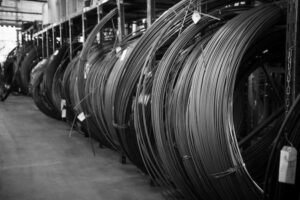
Selecting the right material for torsion springs is crucial for ensuring they meet the specific requirements of their intended application. The choice of material impacts the spring’s performance, durability, and resistance to environmental conditions. Below is a breakdown of common materials used in torsion spring manufacturing and their primary characteristics:
- Steel and High Carbon Spring Wire:
- Music Wire: Offers high tensile strength and uniformity, making it ideal for high-stress applications.
- Hard Drawn Wire: Provides good strength and moderate elasticity, suitable for less demanding applications.
- Oil Tempered Wire: Known for excellent fatigue life, used in automotive and industrial applications.
- Alloy and Stainless Steel Wire:
- Alloy Steel Wire: Enhanced with alloying elements for superior strength, corrosion, and fatigue resistance.
- Stainless Steel Wire (302, 17-7, 316): Offers excellent corrosion resistance, with 316 being 90% non-magnetic and suitable for non-magnetic applications.
- Non-Ferrous and Exotic Alloy Wire:
- Phosphor Bronze: Combines corrosion resistance with electrical conductivity, ideal for electronic applications.
- Beryllium Copper: Non-magnetic and non-sparking, perfect for chemical or explosive environments.
- Exotic Materials (Inconel, Monel, etc.): For extreme conditions, offering high temperature and corrosion resistance.
When designing torsion springs, it’s essential to consider the environment in which the spring will operate. For corrosive environments, stainless steel or non-ferrous alloys are preferable, while high carbon or alloy steel wires are suitable for high-stress applications. Additionally, the expected temperature range should not compromise the material’s functionality. In some cases, plastic or coated springs may offer better suitability for harsh chemical conditions or marine environments.
The finishes available for torsion springs, such as Zinc, Gold Irridite®, and Black Oxide, further enhance their resistance to environmental factors. When selecting a material, it’s also beneficial to consult a torsion spring chart or a professional to ensure the chosen material meets all necessary specifications and performance requirements.
Calculating Spring Rate and Spring Stress
To accurately calculate the spring rate and stress of a torsion spring, one must understand the fundamental equations and factors that impact these parameters. This understanding ensures the design of a torsion spring that can withstand the required forces and operate effectively within its application. Below are the essential formulas and considerations for calculating torsion spring rate and stress:
Calculating Spring Rate and Stress:
- Spring Constant (Rate) Calculation:
- For Negligible Arm Length: The formula
KT = (Ed^4) / (8 * N * D^3)is used, whereEis the modulus of elasticity of the material,dis the wire diameter,Nis the number of active coils, andDis the mean coil diameter. - For Non-Negligible Arm Length: Adjust the formula to
KT = (Ed^4) / (8 * (N - 1) * D^3), accounting for the length of the arm extending from the coil.
- For Negligible Arm Length: The formula
- Stress Calculation:
- The stress within the torsion spring can be determined using
σ = (M * 32) / (π * d^3), whereMis the moment or torque, anddis the wire diameter.
- The stress within the torsion spring can be determined using
Key Considerations:
- Torque and Deflection: Calculate the torque and angular deflection to determine the required spring constant by dividing the torque by the angle. This step is crucial for understanding the spring’s ability to return to its original position after being twisted.
- Tolerance Levels: Standard Spring Rate Tolerance for torsion springs is +/- 10%. This tolerance level should be considered in the design phase to ensure the spring meets the necessary specifications.
- Maximum Deflection: The suggested maximum deflection is designed to ensure a long service life with average cycling. It’s vital to adhere to these limits to prevent premature failure of the spring.
Practical Application:
- Estimating Basic Spring Rate and Wire Stress: Utilize the formulas
k = (G * d^4) / (8 * D^3 * n)for spring rate andσ = (8 * K * D) / (π * d^3)for wire stress, whereGis the modulus of rigidity,nis the number of active coils, andKis the spring constant. These estimates provide a preliminary understanding of the spring’s performance. - Material Strength: Consider the Minimum Tensile Strength (MTS) values, which vary with the spring-wire diameter. Aim for 30 to 45 percent of the MTS value, depending on the material type, to achieve a corrected stress target conducive to a long fatigue life.
By following these calculations and considerations, designers can ensure that their torsion springs are optimized for both performance and longevity.
Impact of Coiling Direction on Performance
Understanding the impact of coiling direction on the performance of torsion springs is essential for designers and engineers. This aspect of torsion spring design can significantly affect how a spring functions in its intended application. Here’s a breakdown of the key considerations regarding coiling direction:
- Coiling Direction Identification:
- Right-Hand Coiling: When looking at the spring from the axis, if the coils wrap in a clockwise direction, the spring is considered right-hand coiled.
- Left-Hand Coiling: Conversely, if the coils wrap counterclockwise, the spring is left-hand coiled.
- Performance Implications:
- Compatibility with Application: The coiling direction must match the direction of the force applied in its application. A mismatch can lead to inefficient spring operation or premature failure.
- Spring Leg Orientation: The direction of coiling directly influences the orientation of the spring legs. This is crucial for assembly and ensuring the legs correctly engage with other components.
- Selection Criteria:
- Torque Requirements: Depending on whether the torque needed is clockwise or counterclockwise, the coiling direction can enhance or hinder the spring’s efficiency in delivering the required force.
- Assembly Constraints: In some applications, space constraints or the design of interfacing parts may dictate the coiling direction to ensure proper fit and function.
In summary, the coiling direction of a torsion spring plays a pivotal role in its performance and suitability for specific applications. Designers must carefully consider this aspect to ensure optimal functionality and longevity of the spring within its mechanical system.
Leg Configuration and End Type Considerations
Torsion springs are integral components in a wide array of mechanisms, including door hinges, garage doors, levers, and machinery. The efficiency and functionality of these springs are significantly influenced by their leg configuration and the types of ends they possess. Here’s a closer look at the various end types and their applications:
- Curved Ends: These ends are designed to offer mounting flexibility, allowing the force exerted by the torsion spring to be applied from a different endpoint. This flexibility is crucial in applications where the mounting points are not aligned in a standard configuration.
- Twisted Ends: Similar to curved ends, twisted ends provide mounting flexibility but with an added advantage. They can navigate around obstacles by bending the wire around the object, making them suitable for complex assemblies where direct paths are obstructed.
- Hooks: Torsion springs with hooks are designed for easy attachment to axles or other objects. This feature grants them a higher degree of implementation flexibility, making them a popular choice for diverse applications ranging from small gadgets to large industrial machines.
For those with specific requirements, custom-made ends are a viable option. These are tailored based on detailed drawings provided by the client, with prototypes supplied before batch production. This customization ensures that the torsion springs perfectly fit the intended application, enhancing both performance and reliability.
| End Type | Benefits | Common Applications |
|---|---|---|
| Curved Ends | Mounting flexibility, different endpoint force application | Door hinges, machinery |
| Twisted Ends | Navigates obstacles, mounting flexibility | Complex assemblies |
| Hooks | Easy attachment to objects, flexible implementation | Garage doors, levers |
| Custom-Made | Tailored to specific requirements, enhanced performance | Specialized equipment |
Choosing the correct end type for a torsion spring is crucial for the optimal functioning of the device it is a part of. It ensures that the spring can effectively transfer the torsional tension needed for the application, whether it’s opening a door, operating machinery, or any other mechanism requiring rotational force.
Impact of Coil Diameter on Spring Function
The coil diameter of a torsion spring is a pivotal factor that influences its overall performance, including strength, durability, and functionality. Understanding the relationship between coil diameter and these performance metrics is essential for optimizing torsion spring design for specific applications. Here are key insights:
- Spring Index Importance:
- The spring index, the ratio of the mean diameter to the wire diameter, is crucial for determining a spring’s characteristics.
- A lower spring index indicates a tighter coil, which translates to higher strength and increased compressive stress. Conversely, a higher spring index results in a looser coil, affecting the spring’s flexibility and potential for wider applications.
- Impact on Spring Functionality:
- Inner Diameter: Determines the maximum diameter of a shaft or mandrel that can be inserted into the spring. A 10% clearance is recommended to ensure the inserted component operates freely.
- Outer Diameter: Influences the size of the hole through which the spring is inserted, impacting the spring’s compatibility with surrounding components.
- Body Length Changes: Under torque, the body length increases as the spring diameter decreases, affecting how the spring can be employed in mechanisms requiring precise movements.
- Wire Diameter Considerations:
- Thicker Wires: Offer increased stiffness and strength, enhancing fatigue life and durability. They are preferable for applications demanding high resistance to wear and corrosion.
- Thinner Wires: Provide greater flexibility but require more precise manufacturing techniques due to tighter tolerances. While they offer increased load capacity and deflection rates, they may be more susceptible to bending or buckling and have reduced corrosion resistance.
In summary, the coil diameter and wire thickness play significant roles in determining a torsion spring’s applicability and performance in various mechanical systems. By carefully selecting these dimensions, designers can tailor torsion springs to meet the specific needs of their applications, ensuring optimal functionality and longevity.
Torsion Spring Tolerances
When considering the tolerances of torsion springs, several key factors come into play that directly influence the production process and the final product’s quality. These include:
-
- Tolerances in torsion spring manufacturing are critical for ensuring that the final product meets the required specifications and performs as expected in its application. These tolerances can affect various aspects of the spring, including wire diameter, body diameter, leg length, and overall spring length.
- Wire Diameter Tolerance: Typically falls within a range of +/- 0.001 inches for most materials.
- Body Diameter Tolerance: Can vary but generally maintains a standard of +/- 2% of the target value.
- Leg Length Tolerance: Dependent on the spring design but usually aims for a precision of +/- 5%.
Torsion Spring Prototyping and Testing
Prototyping and testing are crucial stages in the torsion spring design process. They allow designers to evaluate the spring’s performance under real-world conditions and make necessary adjustments before full-scale production. Here’s how to approach these important phases:
Prototyping:
- 3D Printing and CNC Machining: These technologies enable rapid production of torsion spring prototypes. They are especially useful for creating complex leg configurations or when working with non-standard materials.
- Material Selection: Choose prototype materials that closely mimic the mechanical properties of the final production material. This ensures the prototype’s performance accurately represents the final product.
- Scale Models: For large torsion springs, consider creating scale models. This can save on costs and materials while still providing valuable insights into the spring’s design and functionality.
Testing:
- Load Testing: Apply forces to the prototype to ensure it meets the required spring rate and torque specifications. This test helps identify any issues with spring stiffness or strength.
- Fatigue Testing: Subject the spring to repeated cycles of loading and unloading to assess its durability and lifespan. This is critical for applications where the spring will undergo numerous cycles throughout its use.
- Environmental Testing: Expose the spring to conditions it will face in its intended application, such as temperature variations, moisture, or corrosive substances. This ensures the spring can withstand its operating environment.
Adjustments and Reiterations:
- Data Analysis: Collect and analyze data from the tests to identify any performance gaps or areas for improvement.
- Design Modifications: Based on the test results, make necessary adjustments to the spring design. This may involve changing the wire diameter, coil size, material, or leg configuration.
- Repeat Testing: Conduct additional rounds of testing on the modified prototype to ensure all issues have been addressed and the spring meets all performance criteria.
By meticulously following these steps, designers can refine their torsion spring designs to achieve optimal performance, durability, and reliability, ensuring the final product meets the highest standards of quality and effectiveness.
Conclusion
Throughout this detailed exploration of torsion spring design, we’ve navigated the intricate parameters that dictate their functionality, from material selection and coil diameter implications to the effects of coiling direction and prototyping methodologies. These foundational aspects are crucial for engineers and designers aiming to craft torsion springs that are not only efficient in their application but also durable and resilient under varied conditions. By underscoring the importance of each design parameter, including the crucial role of leg configuration and manufacturability tolerances, we’ve laid a comprehensive groundwork for creating torsion springs tailored to specific functional requirements.
FAQs
Q: How can I determine the correct torsion spring for my application?
A: To select the appropriate torsion spring, you should consider several critical factors, including the wire size, the inside diameter of the spring, its overall length, the direction in which it winds, and the weight of the garage door it will be supporting.
Q: What principles underlie the design of torsion springs?
A: Torsion springs are engineered following design for manufacturability (DFM) strategies, emphasizing minimal spatial and weight requirements. The design methodology involves identifying potential topologies and optimizing the parameters of the chosen topology using the finite element method (FEM) to minimize equivalent stress.
Q: How should I go about choosing a torsional spring?
A: The process for selecting a torsional spring mirrors that of choosing any torsion spring, where key considerations such as dimensions, weight capacity, and specific application requirements guide the selection process.
Q: What are the essential mechanical specifications to consider for torsion springs?
A: When specifying torsion springs, it’s important to note the inner diameter, outer diameter, wire diameter, body length, leg length, the total number of coils, pitch, winding direction, leg angle, leg orientation, and leg style. These specifications are crucial for ensuring the spring meets the application’s mechanical requirements.
